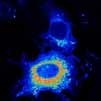Vitamin D may influence racial differences in breast cancer risks: Study
The study – published in Breast Cancer Research – reports that specific genetic variations in vitamin D receptors and genes responsible for deactivating the sunshine vitamin, are associated with an increase in breast cancer risk for African American women.
Led by Dr Song Yao of the Roswell Park Cancer Institute, USA, the research team compared levels of vitamin D in the blood of women with or without breast cancer – finding that severe vitamin D deficiency in African American women was almost six times more common than in European American women.
But, because low levels of the vitamin D can also be caused by disease, or by treatment, the researchers decided to focus their studies on genetic variations in the vitamin D receptors, and the enzymes responsible for breaking down vitamin D in the body – controlled by a gene known as CYP24A1.
"While it is difficult to determine the exact effect of low levels of vitamin D on the risk of developing breast cancer, our results show that these genetic variations, which contribute to the function of vitamin D, are strongly associated with oestrogen receptor (ER) negative breast cancer and may contribute to the more aggressive breast cancer features seen in African American women," said Yao.
Vitamin D and the big C
The link between vitamin D intake and protection from cancer dates from the 1940s when Frank Apperly demonstrated a link between latitude and deaths from cancer, and suggested that sunlight gave "a relative cancer immunity".
Since then there have been numerous studies suggesting associations between vitamin D and lower risks of certain cancers.
In this case, vitamin D refers to two biologically inactive precursors – cholecalciferol (D3) and ergocalciferol (D2). Both D3 and D2 precursors are hydroxylated in the liver and kidneys to form 25- hydroxyvitamin D (25(OH)D), the non-active 'storage' form, and 1,25-dihydroxyvitamin D (1,25(OH)2D), the biologically active form that is tightly controlled by the body.
There is growing evidence that 1,25(OH)2D has anticancer effects, but the discovery that non-kidney cells can also hydroxylate 25(OH)D had profound implications, implying that higher 25(OH)D levels could protect against cancer in the local sites.
In 2010, a meta-analysis published in the European Journal of Cancer, reported on the ‘ambiguous’ evidence for the beneficial effects of vitamin D in breast cancer – stating that whilst studies measuring vitamin D levels post diagnosis offer an inverse relationship, larger population were needed to confirm such results.
New study
The new research considered data from 1155 postmenopausal, oestrogen receptor positive breast cancer patients.
The results showed that African American women with the highest levels of vitamin D also had a specific genetic variation in the receptor for vitamin D. The team noted that although this variation was also present in European Americans, it was not associated with alteration in their levels of vitamin D.







